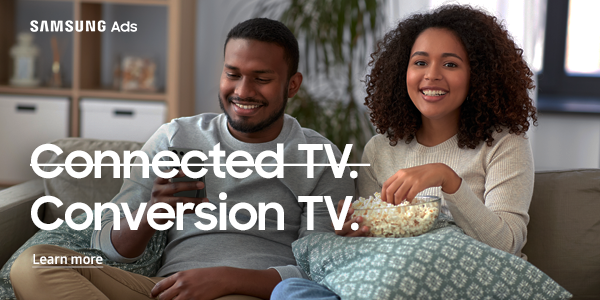Marketers today are operating in an outcome-obsessed world. For mobile app marketers, especially, the smallest screen in the home – the mobile phone – has become the default choice for driving lower-funnel outcomes.
The problem? Social reach is limited, and marketers are running out of places to get in front of their audiences.
But what if I told you the largest, most captivating screen in the home – the TV – is actually a powerful tool to drive mobile app conversions? Many mobile app marketers are missing a huge opportunity by overlooking connected TV (CTV) as a way to drive measurable, full-funnel mobile conversions.
CTV has become the default viewing method for today’s consumers, and it gives marketers a rare chance to reach leaned-in viewers with relevant messages that move them to take action on their phone.
In today’s performance-driven landscape, CTV now enables advertisers to optimize campaigns toward CPI (cost per install) and return-on-ad-spend goals, tying media spend directly to mobile outcomes.
It’s no longer just about awareness. CTV can deliver bottom-line results.
The power of the biggest screen
CTV unlocks a high-impact opportunity to attract new target audiences and hold their attention. With CTV, mobile advertisers can extend beyond social and linear buys to achieve incremental reach.
If your performance budget is focused purely on social media, you’re likely missing at least 20% of the total addressable audience. Even Facebook only reaches 53% of Americans. Meanwhile, co-viewing on CTV amplifies reach. Any single CTV impression has nearly 50% greater exposure than a mobile impression.
CTV’s performance recipe: Right person, right message, right time
CTV offers performance efficiency through a mix of rich data, fast feedback loops and algorithmic optimization. Targeting benefits from aggregated behavioral, contextual and interest-based signals to build precise audience clusters.
Advertisers can test creative formats, placements and message-sequencing strategies to determine what performs best, from 15- and 30-second video ads to interactive ad formats, vertical video units and native placements on the home screen.
What works gets scaled. What doesn’t work gets replaced.
Today’s bid optimization is driven by first- and third-party data, connecting ad exposures to real-time mobile actions. In early testing of campaigns using CTV, some gaming publishers saw mobile conversions outperform benchmarks by an average of 150%. This level of granularity ensures that budgets go where they’ll deliver the highest return.
Unified, precise measurement across devices
CTV’s data-rich ecosystem allows marketers to optimize across every touch point, from installs to in-app engagement and monetization.
Third-party mobile measurement partners, now support cross-platform, post-campaign analytics that unify data across screens. Marketers can track metrics like install rate, CPI and ROI with greater accuracy and confidence. With data at the forefront of our advertising ecosystem, Samsung Ads is expanding our partnerships with leading third party mobile measurement partners (MMPs) like AppsFlyer to enable advertisers to gain even richer insight into post-campaign performance with unified metrics spanning various platforms and devices.
Moving down the funnel with CTV
CTV has evolved into a full-funnel performance engine. Mobile marketers looking to hit specific benchmarks should seek out CTV partners who can deliver measurable results within a defined budget.
Not all platforms are created equal. By working with forward-thinking partners like Samsung, mobile app marketers can harness the full potential of CTV as a measurable, effective mobile outcome machine.
For more articles featuring Travis Scott Howe, click here.














